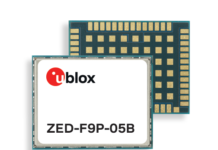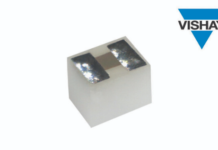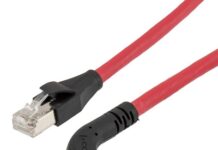
Fujitsu Limited and Fujitsu Laboratories Ltd. (collectively “Fujitsu”) announced the development of a gallium-nitride (GaN) high-electron mobility transistor (HEMT) power amplifier for use in W-band (75-110 GHz) transmissions.
To realize long-distance, high-capacity wireless communications, a promising approach is to utilize the W-band and other high frequency bands that encompass a broad range of usable frequencies, and increase output with a transmission power amplifier. At the same time, demand exists for improved efficiency in power amplifiers in order to mitigate the increased power consumption of communication systems.
Fujitsu has now succeeded in developing a power amplifier for use in W-band transmissions that offers both high output power and high efficiency, improving transistor performance through the reduction of electrical current leakage and internal GaN-HEMT resistance. Fujitsu has achieved 4.5 watts per millimeter of gate width, the world’s highest output density in the W-band, and has confirmed a 26% reduction in energy consumption compared to conventional technology.
Fujitsu anticipates that setting this power amplifier between wireless communication systems in two locations will achieve high-bandwidth communications at 10 gigabits per second (Gbit/s) over a distance of 10km.
Part of this research was carried out with support from Innovative Science and Technology Initiative for Security, established by the Acquisition, Technology & Logistics Agency (ATLA), Japan Ministry of Defense.
Details of this technology will be announced at the 12th International Conference on Nitride Semiconductors (ICNS-12), to be held in Strasbourg, France, from July 24 until July 28th.
Development Background
Wireless data traffic from mobile communications has increased dramatically over the last few years, and with the spread of 5G and IoT devices it is predicted to increase at an annual growth rate of 1.5 times until the year 2020. In order to build this sort of high capacity next-generation wireless communications network, attention has been focused on wireless communication technology using the high frequency W-band. The range of frequencies that can be used in the W-band is very broad, and because communication speed can be rapidly increased in this band, it is well-suited for this kind of high bandwidth wireless communication.
Conventional wireless communications technology, has allowed for performance of several Gbit/s over distances of several kilometers, but achieving an even greater increase in wireless communication distance and capacity utilizing the W-band demands further increases to the output of power amplifiers to boost signals during transmission.

















